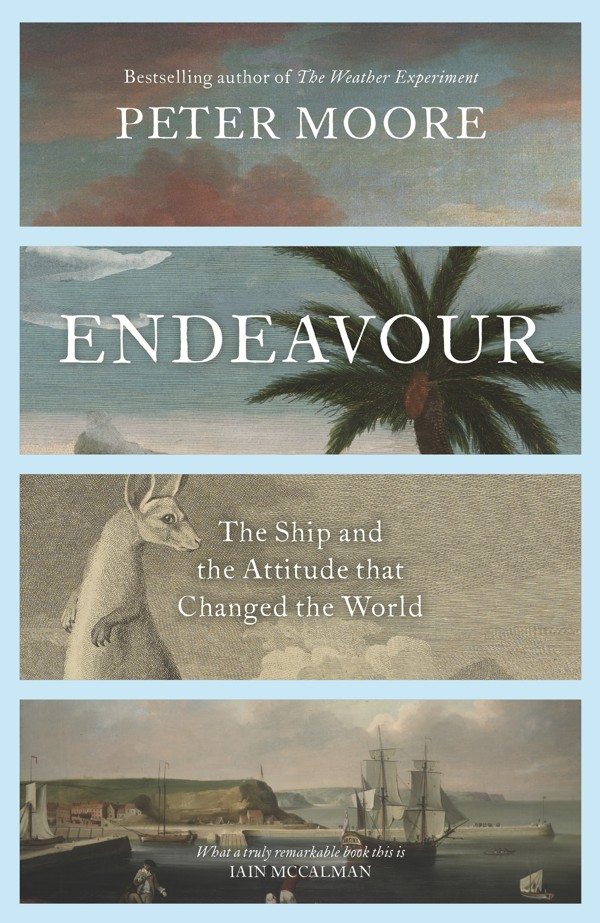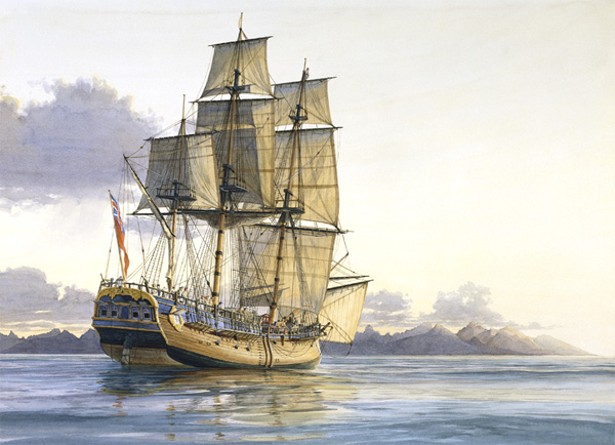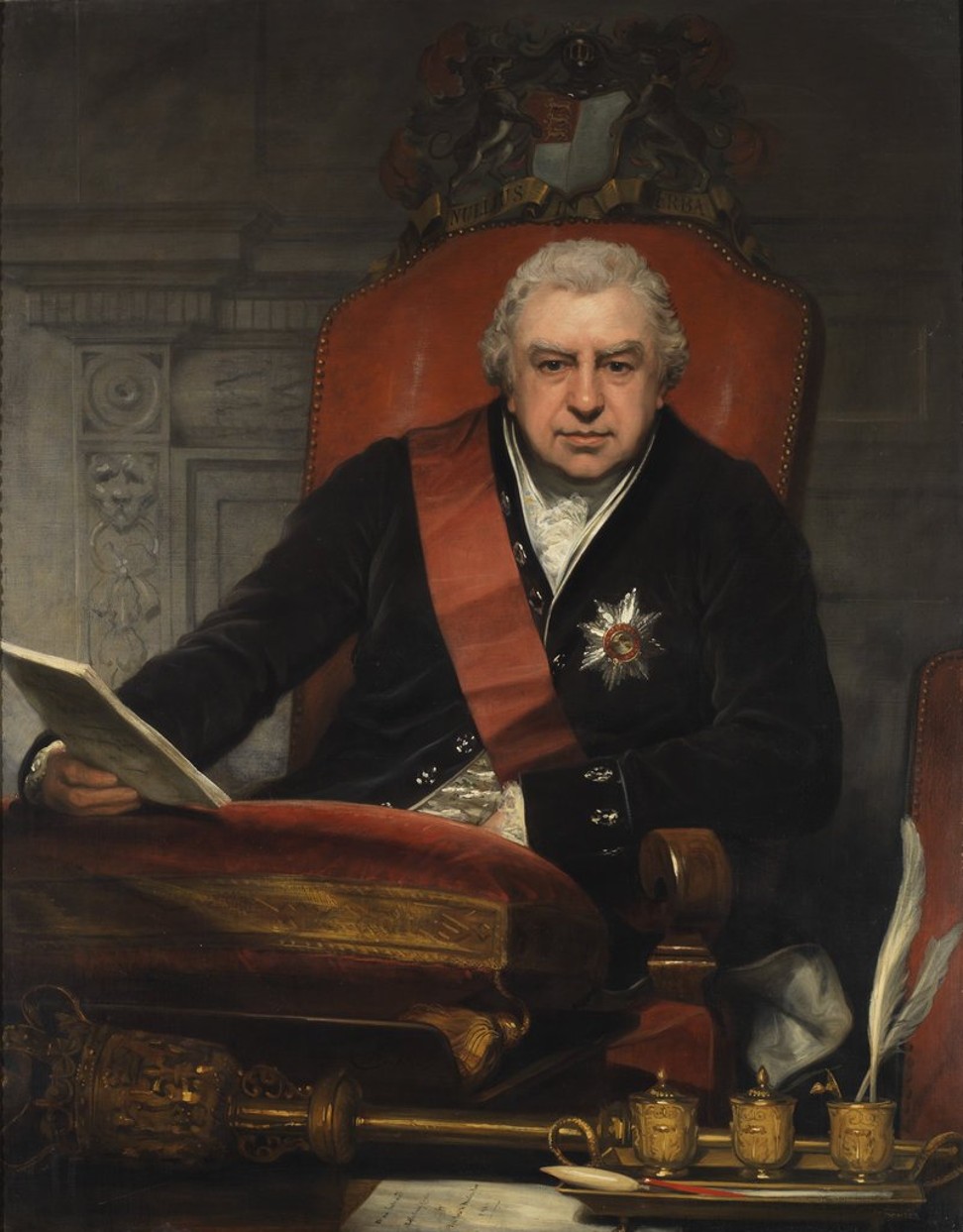
Endeavour, ship Captain Cook sailed to Australia and New Zealand, honoured in book that delves into full lifespan of legendary vessel
Peter Moore’s richly detailed book ‘Endeavour’ is an engrossing love letter to a word, an attitude and the ship Captain James Cook famously sailed, a piece of which was even sent to the moon with astronauts in 1971

Endeavour
by Peter Moore
Chatto
4 stars

Endeavour was the ship that Captain Cook sailed to Australia and New Zealand on his first voyage of discovery from 1768 to 1771. Endeavour, Peter Moore argues in this ambitious exploration, was also the word that best captured the spirit of the age; Britain, in the second half of the 18th century, “was consumed by the impulse for grand projects, undertaken at speed”, he writes.
Moore, the author of two previous books – most recently the group biography The Weather Experiment – finds a form for his inquiries in the 18th-century vogue for “it-biographies”: accounts of the lives of real or fictional objects such as coins, coaches and walking canes. He focuses on the wood that became the ship Endeavour, and in doing so is able to connect a far-flung cast of characters and places, pulling into his story politicians, philosophers, sailors, shipbuilders and the natural history of Britain, Australia and New Zealand.
No one knows how many oak trees were used to make the ship in England’s northern Whitby docks, which was first christened the Earl of Pembroke before it was renamed Endeavour, or where they were sourced from. Probably about 200 were needed, each about 100 years old.
The first purpose of the Earl of Pembroke was to transport coal from Newcastle in the north of England to London in the south. It was not until 1768 that she was acquired by the Royal Navy, renamed and refitted, to serve as Cook’s vessel of exploration.
From this point, the life of Endeavour comes sharply into view. She weighed 368 tonnes and the master shipwright Adam Hayes took responsibility for customising her, in the shipyard at Deptford in London, for Cook’s voyage. She left her London anchorage on July 30, 1768, bound for Tahiti, where her crew observed “the Transit of Venus over the Sun’s Disk”, before continuing further south into uncharted seas and towards Australia and New Zealand.

Her dramatic end came in 1778 when she was selected as one of the transport ships the British sank at Newport in southeast Wales to obstruct the French.
The botanist Joseph Banks accompanied Cook and could often be seen in his collecting boat, towed along behind the ship. “Banks’ journal shows a man who sets to his collecting every morning with the cheer and spring of a parson on Easter Sunday,” Moore writes. Banks’ research opportunities were influenced by the attitudes with which Endeavour was met. In Tahiti, Moore suggests, there was caution; in New Zealand, belligerence; in Australia’s Botany Bay, aloofness.
Banks derided indigenous Australians as “rank cowards” in his journal: “Apathy was a crime for him far greater than the violence of the Maori or the thieving of the Tahitians. It was made worse by these people’s proximity to the thriving plant life.”

The ship returned to England in July 1771 with more than 30,000 botanical samples, 1,400 previously unknown to European scientists. Moore writes that it took decades to come to terms with the scale of the samples brought back on Endeavour: “All told, this one single voyage enhanced the list of plant species collected in the Species Plantarum of 1762-63 by around a fifth.”
While the ship’s company – Cook and Banks especially – were honoured, promoted and rewarded, “nothing was immediately done for Endeavour herself”. She did not come to rest in a dock like Sir Francis Drake’s Golden Hind, waiting to be turned into relics. She was recommissioned and Cook turned his attention to his next ship, which had the more steely name of Resolution.
Endeavour left England again before the end of the year for the Falklands. By 1775, she was laid up in the Thames requiring “a middling to large repair”. Afterwards she was sold, sailed to Newfoundland in eastern Canada, returned and eventually renamed Lord Sandwich.

Lord Sandwich was one of about 350 ships that assembled off Staten Island before the Battle of Brooklyn in August 1776 during the American Revolution. Her dramatic end came in 1778 when she was selected as one of the transport ships the British sank at Newport to try to obstruct the French fleet, which had arrived to help the revolutionaries.
In his epilogue, Moore gives a balanced account of Endeavour’s cultural afterlife. For many in the West the ship remains a source of inspiration, most dramatically illustrated by Nasa’s naming of the space shuttle Endeavour in 1989 (Moore notes that it was in homage to the original ship that the Americans retained the “u” in the spelling of SS Endeavour). But for others the ship is a symbol of colonial oppression.
Eventually, fragments of the wood became relics. A piece went to the moon with the Apollo 15 astronauts in 1971. Another was loaned to Nasa by the Graduate School of Oceanography at the University of Rhode Island to travel on the space shuttle Endeavour’s maiden voyage.
Moore’s richly detailed book is an engrossing love letter to a word, an attitude and a ship: it is an endeavour that honours Endeavour, without denying the death and destruction that followed in her wake.